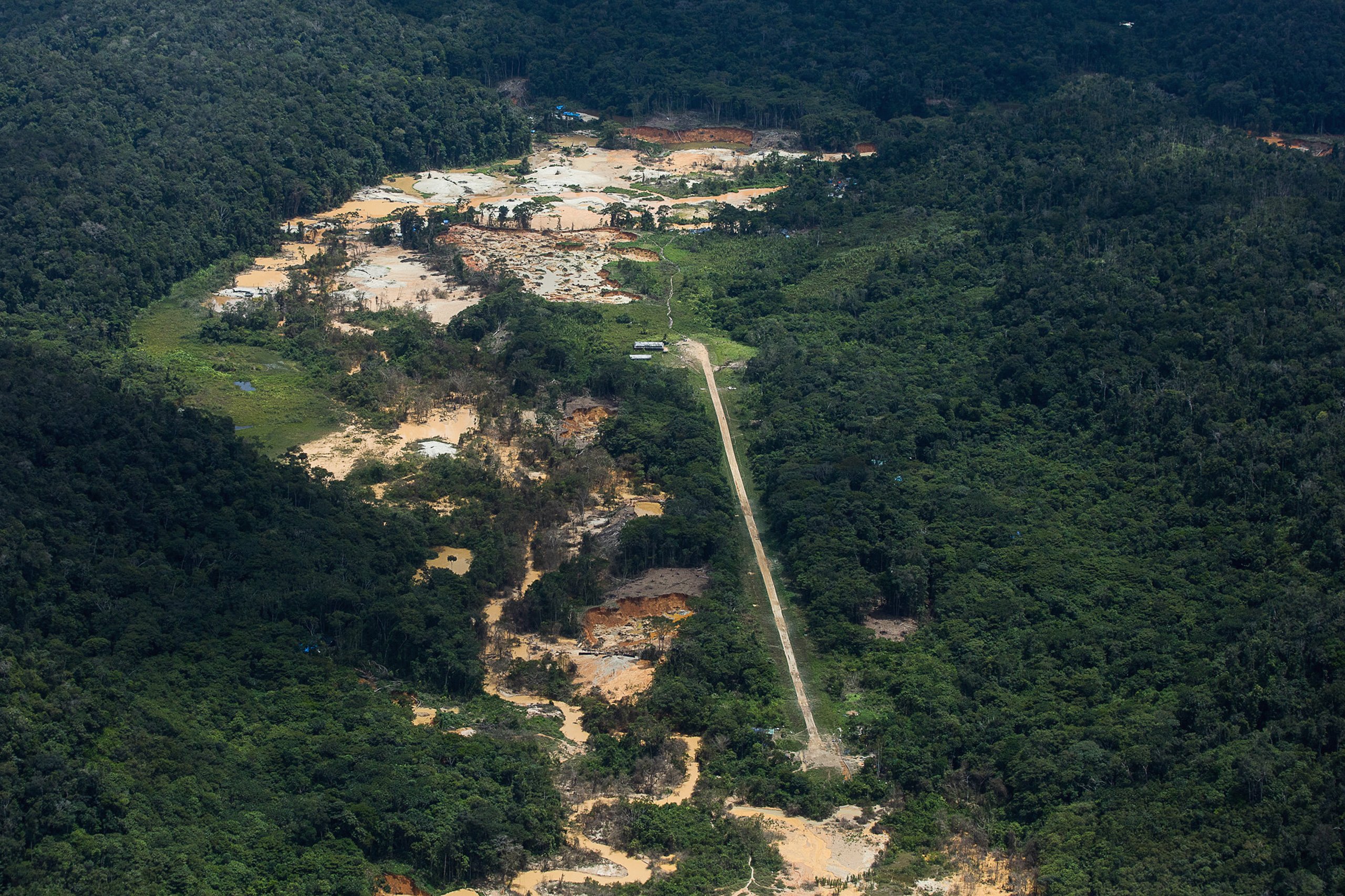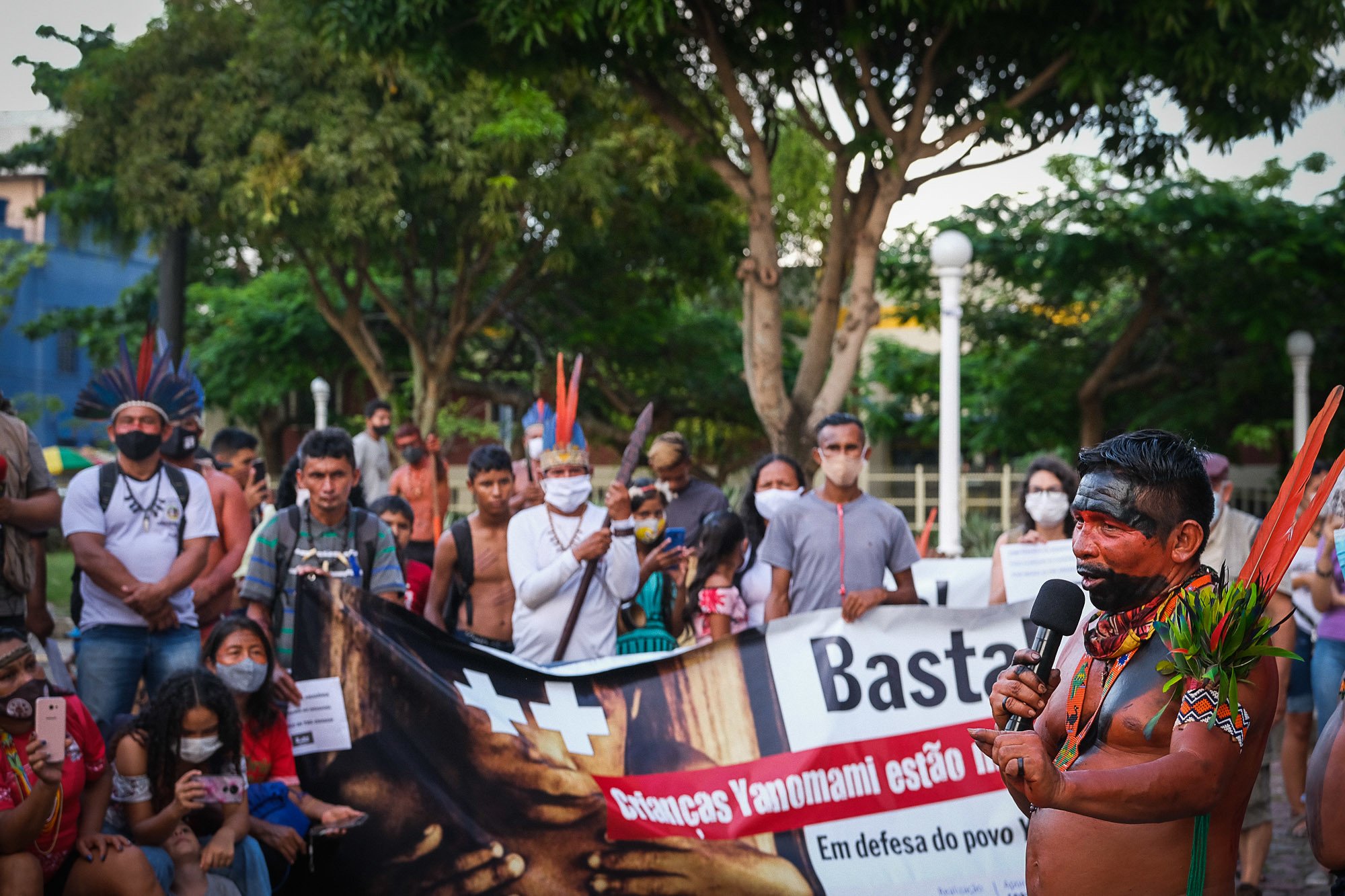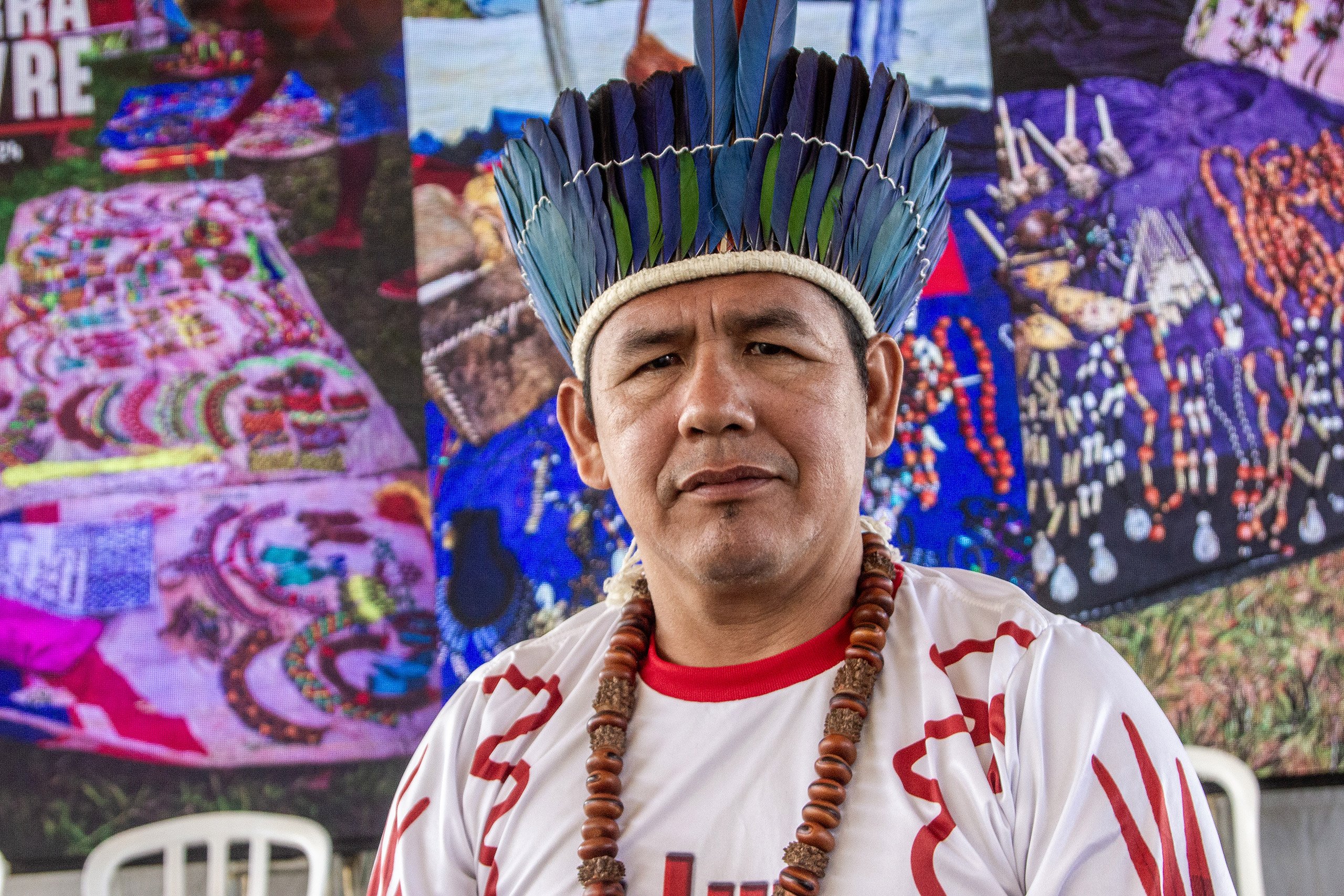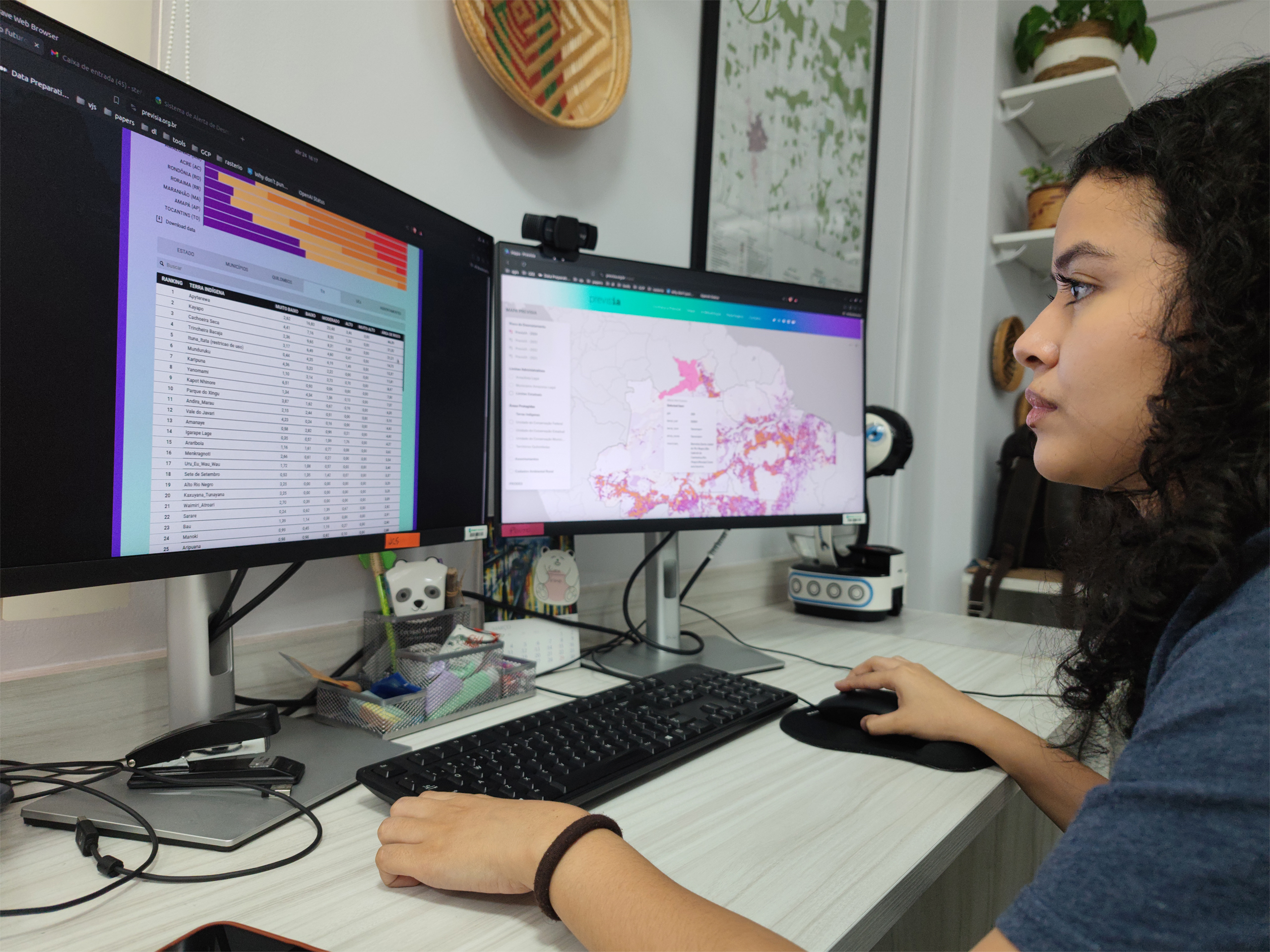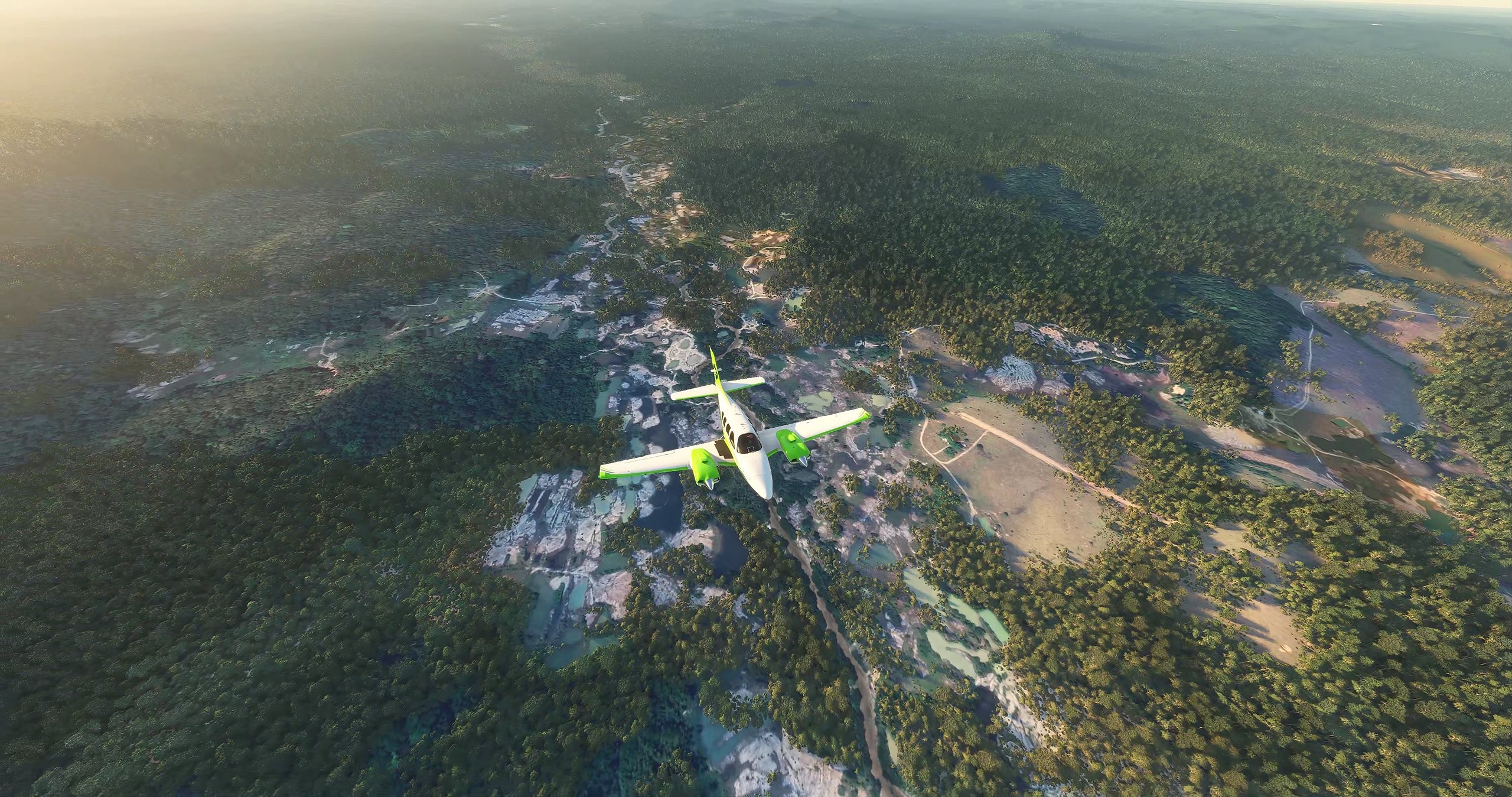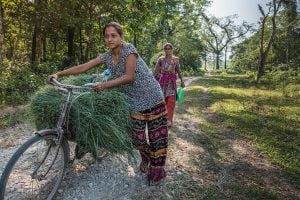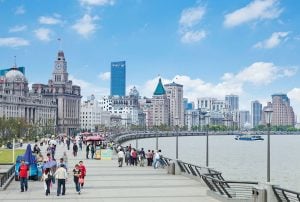Practising risky landings on makeshift airstrips from behind a screen, and accessing high-speed internet in the depths of the Amazon: tech advances are giving illegal miners in Brazil new ways to support their activities, presenting challenges for monitoring and forest protection in remote areas, including the territory of the crisis-hit Yanomami Indigenous people.
Such miners, however, are also finding their efforts thwarted by inspection bodies and NGOs, who are fighting back using similarly new technology: artificial intelligence, and an online game using satellite imagery that crowdsources efforts to monitor deforestation and illegal mining.
In this tech-based battle between environmental preservation and destruction, an urgent situation is at stake: the lives of almost 30,000 Yanomami, who are suffering due to the advance of illegal gold miners, or garimpeiros, into their territory – incursions that are bringing disease, malnutrition and violence.
An ongoing humanitarian crisis
In January 2023, the Brazilian government declared a public health emergency in the Yanomami territory, an area of over 9 million hectares across the states of Amazonas and Roraima, at the border with Venezuela. The declaration came after the discovery of severe malnutrition, malaria and respiratory infections amongst the population, a result of water contamination and deforestation from illegal mining activity.
The government established a taskforce to expel miners from Yanomami land and bring the emergency under control. However, just months later, the garimpeiros returned. In March this year, the Ministry of Indigenous Peoples estimated that there were 7,000 miners active in the area. The environmental destruction continues.
Data from Deter, the federal government’s deforestation alert system, shows that mining caused the loss of 384 hectares of native vegetation in Yanomami territory in 2023 – more than double the 188 hectares recorded the previous year.
In this remote region of the Amazon rainforest, where access is difficult, and rivers and roads are often impassable, prospectors mainly use aircraft to get around. To do this, their pilots must take their chances on precarious dirt runways, which are sometimes less than 300 metres long; the runways at São Paulo’s Congonhas airport, by comparison, stretch over 1,000 metres. Any wrong manoeuvre can cost the lives of the crew, as well as the loss of any illegally exploited cargo, making thorough practise in landing and taking off in these conditions necessary.
They may now find an unexpected space for this practice: Microsoft’s Flight Simulator. Using satellite images and the topography of the territory, the technology giant’s paid software can simulate real-life situations for its user base that ranges from curious flight enthusiasts to professional pilots.
Paulo Figueiredo, going by the username Tchockozzo, states on a flight simulator modifications community website that he is the son of a pilot who, between the 1970s and 1990s, landed on several of the challenging airstrips opened up by mining in the middle of the Amazon rainforest. Figueiredo created flight simulator packages of these clandestine runways for users to download and use in the programme, and uploaded tutorial videos on editing the software to add the strips.
Microsoft Flight Simulator allows users “to discover and really feel what it’s like to fly” in these clandestine areas, he writes in the description for his simulation. It is unclear whether Figueiredo’s simulation has been used to support any illegal activity.
Dialogue Earth cross-referenced simulations that are pre-installed in the Microsoft programme with the 1,269 clandestine airstrips identified in 2022 by a joint investigation by The Intercept Brasil and the New York Times. From this, Dialogue Earth discovered discovered at least two of these illegal airstrips on Yanomami land that are among those available for training within the Microsoft programme.
A third, previously legalised runway, which lost its registration in March this year, could also be found on the programme. The National Civil Aviation Agency (Anac) told Dialogue Earth that the airstrip was de-registered due to the lack of a protection plan for its surrounding area. But satellite images from April 2024, inspected by Dialogue Earth, show a mining site less than a kilometre from it.
The strip is close to the Waikás village, which lies on the banks of the Uraricoera River, one of the main targets of illegal mining in the Yanomami area. Previously used by the population, the runway was taken over by prospectors, according to Júlio Ye’kwana, president of the Wanasseduume Ye’kwana Association, which represents people from the territory. According to Ye’kwana, the Indigenous people themselves inform the authorities whenever there is a newly opened illegal airstrip in the middle of the forest. “But it’s a risky job because the miners could be there when we go to check the track,” he says.
Ye’kwana notes that the activity could be improved with technological help. “We want to train young Indigenous people so that this monitoring can be done in safer ways, perhaps with the use of drones,” he says. Monitoring via drones is already taking place on the Uru-Eu-Wau-Wau Indigenous land in the Brazilian Amazon in Rondônia state, south of Yanomami territory.
Dialogue Earth approached both Microsoft and Figueiredo for comment on the issues raised in this article, but no reply had been received by the time of publication. In a statement, the Federal Police acknowledged that the sophistication of the technologies used in criminal activities requires it to step up its enforcement actions.
Starlink on the rise
Travelling is not the only difficulty within this remote territory – communication is also hampered, and, for a long time, was primarily conducted via radio. But recently, satellite internet antennas have begun to appear in the hands of prospectors on Yanomami land and in other Amazon reserves.
Estevão Senra, a researcher at the NGO The Socio-Environmental Institute (ISA) who works with the Yanomami, explains that the internet is fundamental to the existence of a garimpo, or informal mining camp: “It is used to recruit people, organise the logistics of the garimpo, guarantee supplies and circumvent inspection.”
High-speed satellite internet improves illegal miners’ communication and coordination capabilities, particularly through WhatsApp groups. This enhanced connectivity allows them to evade law enforcement more effectively, potentially increasing risks for inspectors who are working to combat these activities in remote regions.
The Federal Police told Dialogue Earth that by 2023 it had seized from garimpeiros more than 50 accessories to enable fast connections in Yanomami territory. According to the law enforcement agency, the use of this technology “imposes more challenges” on control bodies and puts “public servants at greater risk”.
Today, the prospectors mainly access satellite internet operated by Starlink, the company owned by US-based billionaire Elon Musk, and user numbers have ballooned in Brazil. In January 2023, there were 15,000 registered Starlink antennas in the country; by March 2024, this had risen to more than 155,000, with more than 40% in the states of the Legal Amazon, based on Dialogue Earth’s analysis of data from the National Telecommunications Agency (Anatel).
The state of Roraima, within which the majority of the Yanomami territory is located, registered a jump from 148 activated Starlink antennas in January 2023 to 4,761 units in March 2024, according to the data from Anatel, which is run by the federal government. Amazonas, also home to part of the Indigenous reserve, was the state with the highest number of activations, with almost 19,000 new antennas in operation so far.
Senra notes that surveillance operations run by the federal police in the territory had already found satellite internet devices linked to garimpos in 2021, but that the use of Starlink has been overtaking its competitors. “Starlink has greatly reduced the cost of this internet, and the signal quality is better,” says the researcher.
But he considers access to high-speed internet to have also brought benefits to the Yanomami people. “Internet has always been an issue for the Amazon in general,” notes Senra. “There’s a good side to this connectivity, because there are Indigenous schools that use it for distance learning, and health teams for emergencies.”
AI and satellites against deforestation
When she chose to study computer engineering, Stefany Pinheiro never imagined that she would use her skills working with algorithms to protect the environment. But that is exactly what the 25 year old is doing with PrevisIA, a platform launched in 2021 by her team at the NGO Imazon, which uses artificial intelligence to help combat deforestation.
“We are producing cutting-edge technology in our region,” says Pinheiro, who lives in Belém, the Amazonian municipality that will host the COP30 climate conference next year.
The organisation estimates that the tool has a 70% accuracy rate when identifying areas at risk of being deforested the following year. According to Pinheiro, this assessment takes into account factors such as proximity to roads, around which 95% of deforestation occurs, and Indigenous lands – which, on the contrary, contribute to protecting forests.
Meanwhile, there is now a way for the public to help identify clandestine airstrips in the Amazon. Greenpeace has created a game called Flying Guardians, based on a separate modification of Microsoft Flight Simulator, in which players are invited to locate such airstrips in the Amazon through satellite imagery updated in real-time.
Within a month of the game’s launch in April, players highlighted over 250 of such tracks within Yanomami and Munduruku Indigenous lands. The organisation – which does not disclose other statistics related to the game, such as user demographics – says it is preparing reports based on the players’ discoveries to share with authorities.
“We believe this is a way of drawing the attention of a different audience to issues that prioritise the environment,” says Jorge Dantas, a spokesperson for Greenpeace. “In this way, our message reaches further.”
